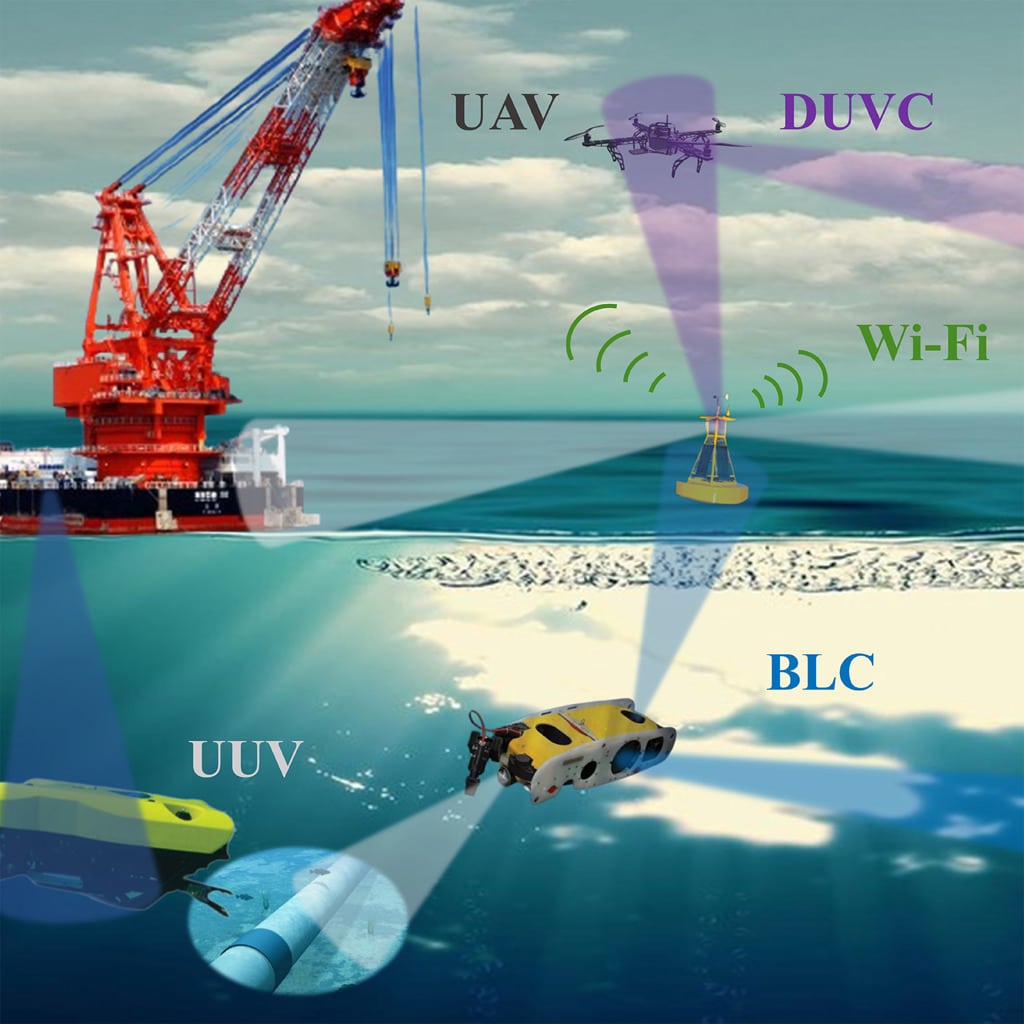All-light communication network works in space, air, and sea

A research collaboration between Nanjing University of Posts and Telecommunications and Suzhou Lighting Chip Monolithic Optoelectronics Technology company in China has developed an all-light communication network that enables seamless connectivity across space, air, and underwater environments. The network design ensures connectivity in any environment by combining different types of light sources.
Even with the advent of wireless 5G internet in urban areas, many regions around the world still lack access to broadband. Elon Musk’s space-based internet services may be promising, but they cannot cater to the needs of research and exploration activities that rely on undersea connections.
For a long time, radio wave-based communication technology has been the go-to option for humans, only to be replaced with optical communication in recent times. However, while optical communications are faster, there are certain limitations that hinder their ability to provide uninterrupted interconnections.
A research team in China has come up with an innovative approach to address the drawbacks of light-based communication and make seamless connections possible.
Wireless light communication networks are often designed for specific scenarios and lack interoperability with other communication systems. To overcome this problem, the researchers used four spectra of light to establish wireless light communication links for four different environments or applications.
The team used blue light for underwater communication because seawater has a reduced absorption window for blue-green light, allowing it to travel farther underwater compared to other wavelengths. This can allow the system to be used to control unmanned underwater vehicles or establish communication between underwater devices and buoys. White LEDs are used to transmit information between objects, such as buoys or ships that are above water.

Deep ultraviolet light is used for connections with airborne devices such as drones, which provide solar-blind communication and prevent interference from sunlight. Additionally, due to their high optical power and directional light emission, near-infrared laser diodes are used for point-to-point communication in free space.
The network is designed to allow wireless or wired access to the Internet based on the TCP/IP scheme, making it suitable for Internet of Things applications.
“It was important to establish a unified transmission mode from communication with blue light, white light, deep UV wavelengths, and laser diodes so we can integrate them using Ethernet switches,” said Wang. “To make this work possible, the LEDs and the modulation schemes determine the network throughput while the avalanche photodiode limits the transmission range, and an optical bandpass filter isolates the desired light signals from those in the other spectra.”
In the study, researchers demonstrated the capabilities of an all-light communication network. The network was able to send and receive real-time video, sensor data, images, and audio files through both wired and wireless access. The network was also able to transmit and receive video simultaneously (full-duplex), which is useful for video conferencing.
Full-duplex video allows simultaneous video transmission and reception, which is essential for applications such as video conferencing. The network maintained high-quality real-time videos at 22 frames per second with resolutions of 2560 × 1440 and 1920 × 1080 pixels with minimal delay. A network packet analysis tool measured a maximum packet loss ratio of 5.80% and a transmission delay below 74 milliseconds.
Now, researchers are looking to improve the efficiency and performance of the all-light communication network. They plan to use wavelength division multiplexing to eliminate the bottleneck caused by LEDs and allow mobile nodes to access the network. This sounds like a great step forward, especially since it will help with underwater equipment and drones.
Journal reference:
- Linning Wang, Yingze Liang, Ziqian Qi, Pengzhan Liu, Zheng Shi, Hongbo Zhu, and Yongjin Wang. All-light communication network for space-air-sea integrated interconnection. Optics Express, 2024; DOI: 10.1364/OE.514930
link








